The Long-Lived History of Nuclear Medicine
When was the marriage between radiation and medicine?
The ANS Nuclear Cafe is a blog owned and edited by the American Nuclear Society. Information contained on the ANS Nuclear Cafe has been provided by numerous sources. Therefore, the American Nuclear Society assumes no responsibility or liability for the accuracy of information contained herein. DISCLAIMER: The views expressed in posted articles do not necessarily reflect the views of the American Nuclear Society. The views expressed here are those of the individual authors. ANS takes no ownership of their views. The American Nuclear Society assumes no responsibility or liability for any use or operation of any methods, products, instructions, or ideas contained on this site.
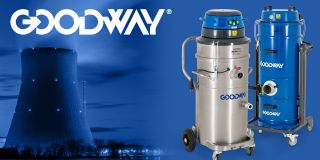
A message from Goodway Technologies
Ensuring Safety and Cleanliness: The Crucial Role of Industrial Vacuums in Nuclear Power Facilities
When was the marriage between radiation and medicine?
The Principles and Practice of Engineering (PE) exam may last for eight hours, but factoring in the time it takes to study, prepare, and apply for the exam, the level of effort grows substantially. Given that, why did I choose to take the nuclear PE exam?
The U.N. and many other governments believe that water scarcity will be one of the defining issues of the 21st century. We live in a world with an increasingly unpredictable climate with both droughts and floods becoming the norm. In much of the developed world we've built dams and tapped aquifers to quench our thirst. Many of the people lacking access to freshwater live in the Middle East and Africa, regions facing continued population growth that can only exacerbate the issue. We must look for new ways to bring water to both the developed and developing world.
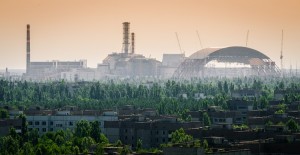
Figure 1.) Chernobyl Nuclear Power Plant with the abandoned town of Pripyat in the foreground. The large arch structure is the New Safe Confinement structure under construction. Via Chernobylguide.com
Chernobyl was by far the worst nuclear power plant accident in history. The explosion and subsequent release of radioactivity forced the long-term evacuation of nearly 135,000 people from a 30-kilometer exclusion zone surrounding the plant [1]. When I was younger and wanted to learn more about nuclear power, I was fascinated with the Chernobyl disaster. This was partly because it was one of the only two books in my elementary school library on the topic, but also because it's constantly used as a cudgel to beat proponents of nuclear power into submission. However, when you look at the "facts" that opponents of nuclear power cite about the accident, they are often dead wrong.
 I truly think people more or less value the environment; they just choose to show it in different ways. Someone in the city might be willing to pay to maintain the Alaskan Arctic, and have no interest in ever going on a hike, let alone visiting the Arctic. Someone else may be dead set against environmental regulation but spend much of their time in beautiful undeveloped places; hiking, fishing, or hunting. No matter what people's personal feelings are towards the environment, we all are dependent on it and need to find ways to agree on how to use the natural resources available.
I truly think people more or less value the environment; they just choose to show it in different ways. Someone in the city might be willing to pay to maintain the Alaskan Arctic, and have no interest in ever going on a hike, let alone visiting the Arctic. Someone else may be dead set against environmental regulation but spend much of their time in beautiful undeveloped places; hiking, fishing, or hunting. No matter what people's personal feelings are towards the environment, we all are dependent on it and need to find ways to agree on how to use the natural resources available.
Note from the editor: Our Friday Nuclear Matinee is a day early this week. Please enjoy a short video from Generation Atomic.
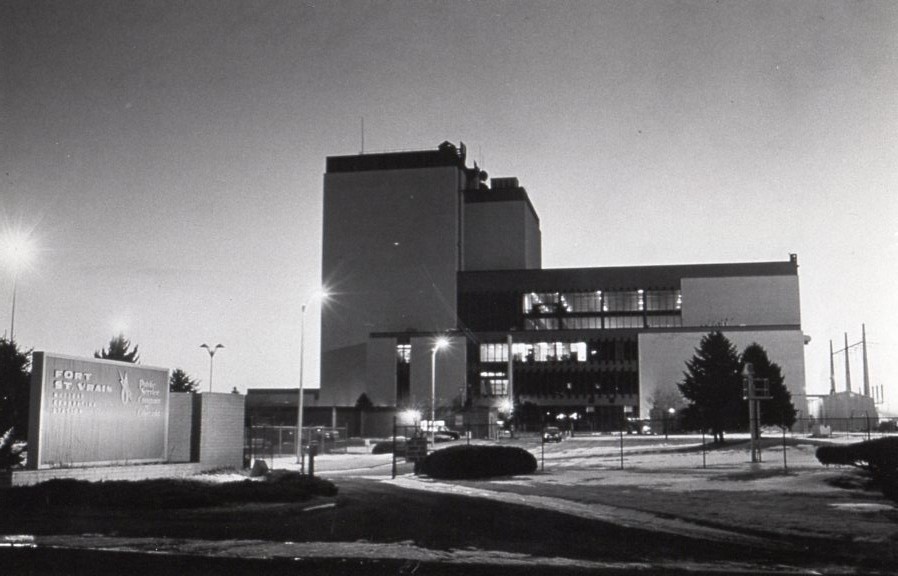
The Fort St. Vrain Nuclear Generating Station completed and in operational service. Press photo in Will Davis collection.
The initial startup of the Fort St. Vrain station finally happened on January 31, 1974, which was roughly one month after the station had received an operating license from the Atomic Energy Commission (AEC). As was the habit in those days with plants that were more experimental in nature than the light water plants, Public Service of Colorado had applied for and been granted by the AEC an operating license under Section 104(b) of the Atomic Energy Act. This provision, ostensibly for medical or for research and developmental reactors, allowed a great deal more operational flexibility to the operators and additionally required far less discussion with and approval by the AEC itself on various matters concerning plant design, operation, administration and developmental testing.
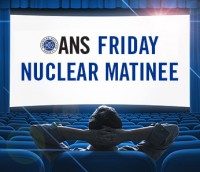 This week's video is a five-minute-plus "tour de force" on the actual steps of fabrication required to manufacture the integral reactors used in the latest Russian nuclear powered icebreakers. The impressive shop operations required to fabricate such a system are usually not seen widely, but in this case, Atomenergomash shows the entire process in both computer graphics and in actual film shot during fabrication. Atomenergomash is the design division of Russian nuclear state enterprise Rosatom; one of the subsidiaries of Atomenergomash is the storied "Joint Stock Company Afrikantov," which is the section responsible for design and fabrication of sea-going nuclear power plants.
This week's video is a five-minute-plus "tour de force" on the actual steps of fabrication required to manufacture the integral reactors used in the latest Russian nuclear powered icebreakers. The impressive shop operations required to fabricate such a system are usually not seen widely, but in this case, Atomenergomash shows the entire process in both computer graphics and in actual film shot during fabrication. Atomenergomash is the design division of Russian nuclear state enterprise Rosatom; one of the subsidiaries of Atomenergomash is the storied "Joint Stock Company Afrikantov," which is the section responsible for design and fabrication of sea-going nuclear power plants.
By Aristidis (Aries) Loumis
According to the Roman historian Quintus Rufus, Midas's Gordian Knot was actually several knots so tightly entangled it was impossible to see how they were fastened. The Gordian Knot of Grid Resilience is similarly constructed. There's the Fuel Security Knot (how is "fuel security" defined?) There are a series of knots related to the definition of and engineering approach to achieving generation system resilience, transmission system resilience, distribution system resilience, and integrated Grid system resilience. There's the Regulatory Knot - a real killer due to electricity market deregulation, entangled federal/state/local regulatory jurisdictions, and the demise of the vertically-integrated electricity provider. There's the Ownership Knot (most Critical Infrastructure in the U.S. is actually owned by the private sector). There's a Tragedy Of The Commons Knot (when everyone is a stakeholder, but no one takes ownership of a problem). I could go on.
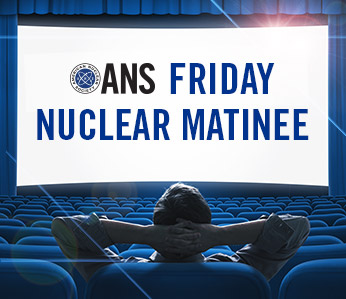
Offsetting the shock of this week's announcement that FirstEnergy intends to shut down its entire fleet of nuclear plants (Davis-Besse, Perry and Beaver Valley) early - the first whole fleet early shutdown declaration in this increasingly dreary nuclear season - we have some good news of the progress underway at Plant Vogtle in Georgia.
FirstEnergy's recent announcement of its intent to shutter four commercial power reactors at its Perry, Davis-Besse, and Beaver Valley sites is just the latest development in an escalating dialogue about electric Grid resilience and nuclear power's role in enabling and maintaining modern resilient societies and the resilient electricity supply systems upon which they depend. (Within this post, my definition of "Grid" is "the integrated system of U.S. generation, transmission, and distribution assets required to produce and deliver electricity to the end consumer".)
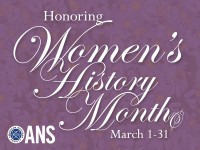 Women's History Month is a time to reflect back on the contributions of women, and to look forward to their potential. In nuclear science, there is a rich history of female physicists and engineers contributing to our field along with their male counterparts. From the radium to radioimmunoassay to reactors, women have defied the odds to become leaders in all areas of nuclear science and engineering.
Women's History Month is a time to reflect back on the contributions of women, and to look forward to their potential. In nuclear science, there is a rich history of female physicists and engineers contributing to our field along with their male counterparts. From the radium to radioimmunoassay to reactors, women have defied the odds to become leaders in all areas of nuclear science and engineering.
In the last half of 1968, Public Service of Colorado obtained the necessary approvals from the US Atomic Energy Commission and from the Colorado Public Service Commission to begin the actual construction of its Fort St. Vrain Nuclear Generating Station.
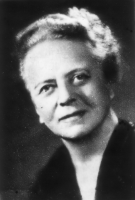
Dr. Ida Noddack (1896-1978) was a German Chemist most well-known for her co-discovery of rhenium and challenging Enrico Fermi's theory on element 93.
Any ANS national member, who is a U.S. citizen, with an M.S. or equivalent experience in nuclear engineering, nuclear science, or a related field, can apply for the Glenn T. Seaborg Congressional Science and Engineering Fellowship. The Seaborg Fellow serves as a staff member in the Congressional office of his or her choice, providing scientific advice to the member of Congress and his or her staff. The 12 months of service starts on January 1 and ends on December 31.
We continue this look at original materials covering America's second commercial High Temperature Gas-cooled Reactor (HTGR) with the examination of components of the NSSS, or Nuclear Steam Supply System.
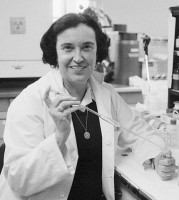
Dr. Rosalyn Sussman Yalow
Rosalyn Sussman Yalow was a medical physicist and won the 1977 Nobel Prize in Physiology or Medicine along with her partner Solomon Berson for the development of radioimmunoassay (RIA).
For most working in the field of nuclear energy, the American Nuclear Society conferences are frequently attended to learn about the latest innovations, present their newest research, and spark new hypotheses. But the best ideas aren't always found in the lecture halls. In the case of the latest collaboration between Idaho National Laboratory (INL) and Oregon State University, lunchtime was the breeding ground for innovation.
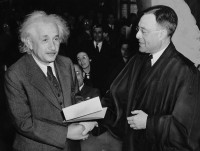 In February of 1950, a devoted follower of Albert Einstein wrote him a letter prompted by the death of his son. He questioned Einstein's belief that physical death cannot be transcended. His grief could only be overcome if Einstein were to endorse a theory wherein his love for his son would render the latter immortal [1]. Einstein wrote back to the grief-stricken father, grimly but pragmatically choosing to focus on nursing his mental health back to a more peaceful state, than on any theories about his son's death.
In February of 1950, a devoted follower of Albert Einstein wrote him a letter prompted by the death of his son. He questioned Einstein's belief that physical death cannot be transcended. His grief could only be overcome if Einstein were to endorse a theory wherein his love for his son would render the latter immortal [1]. Einstein wrote back to the grief-stricken father, grimly but pragmatically choosing to focus on nursing his mental health back to a more peaceful state, than on any theories about his son's death.